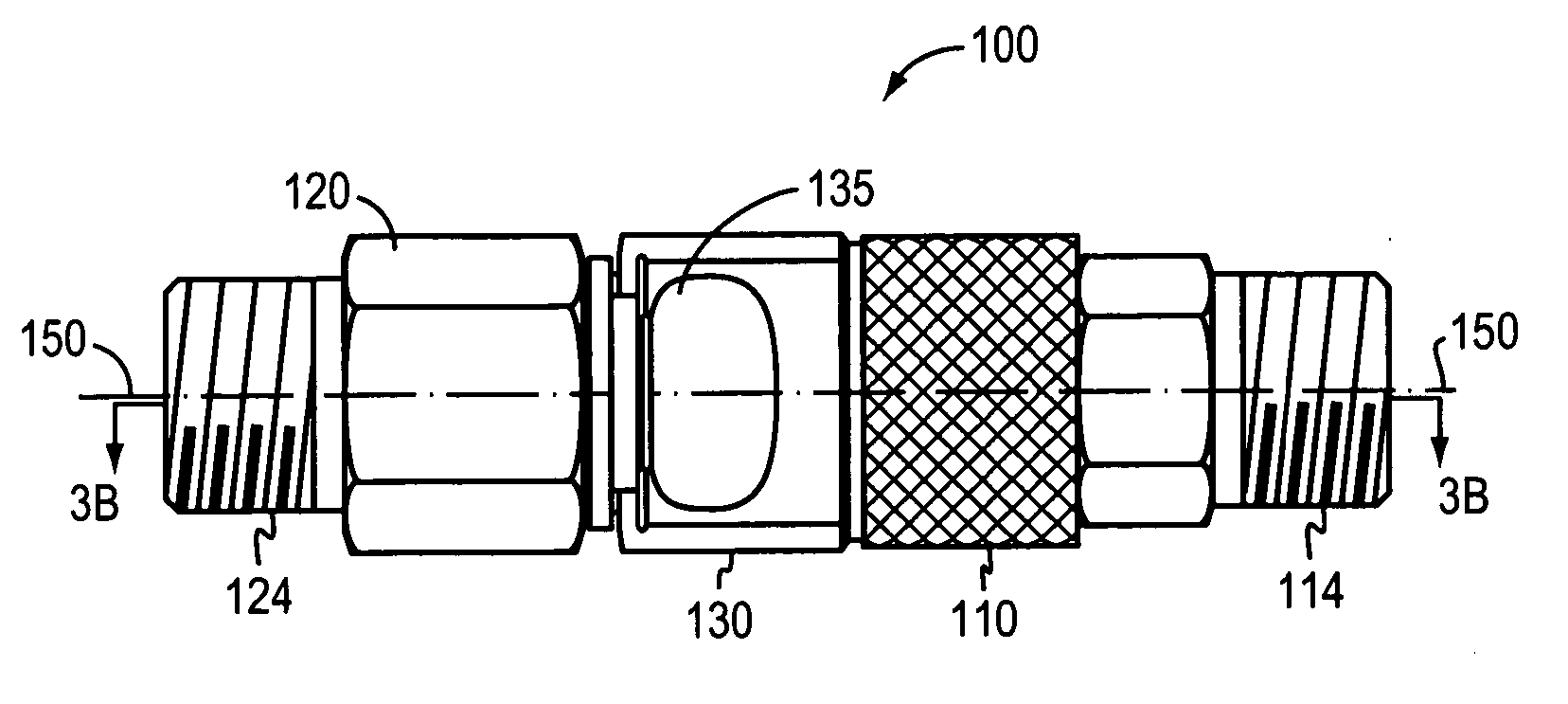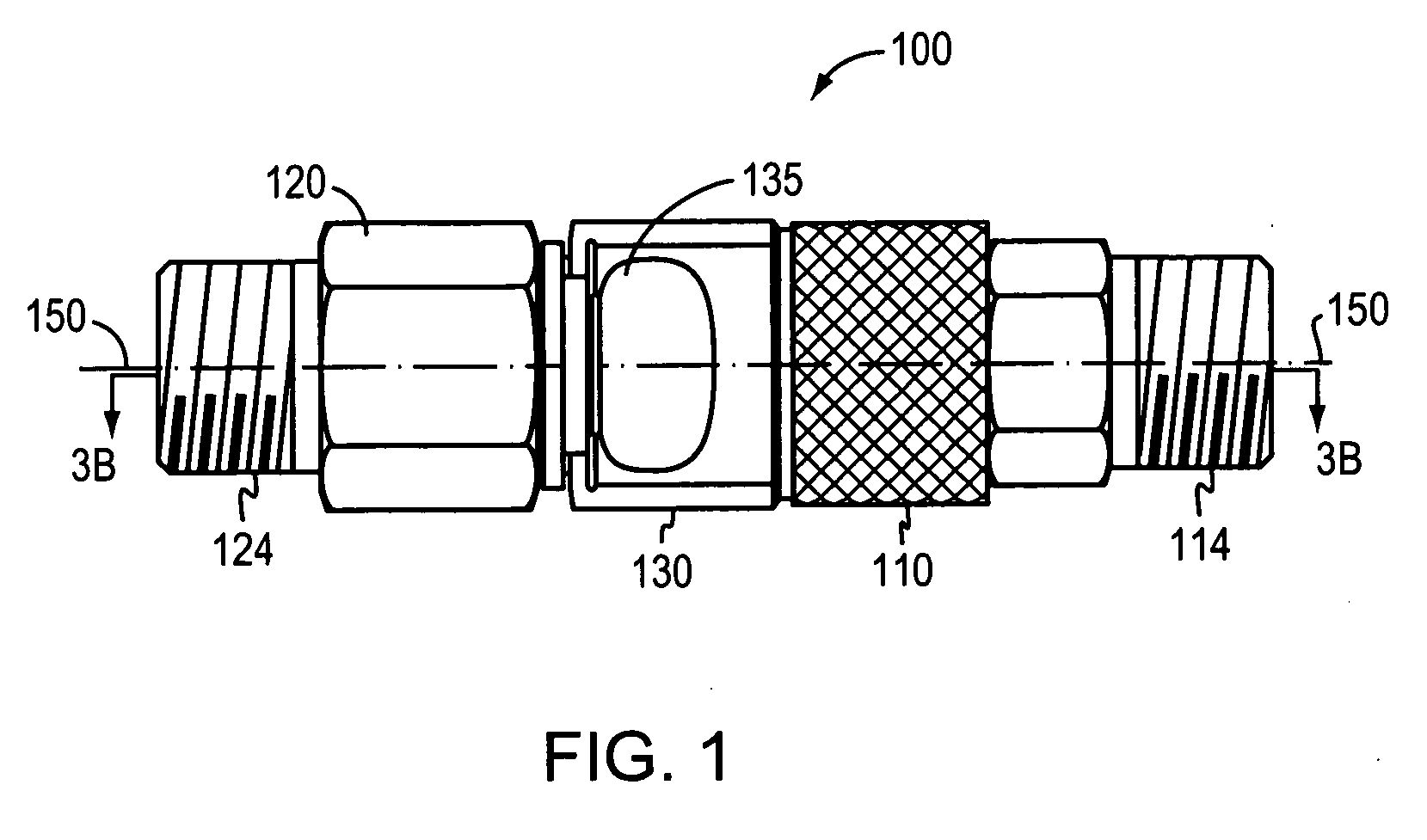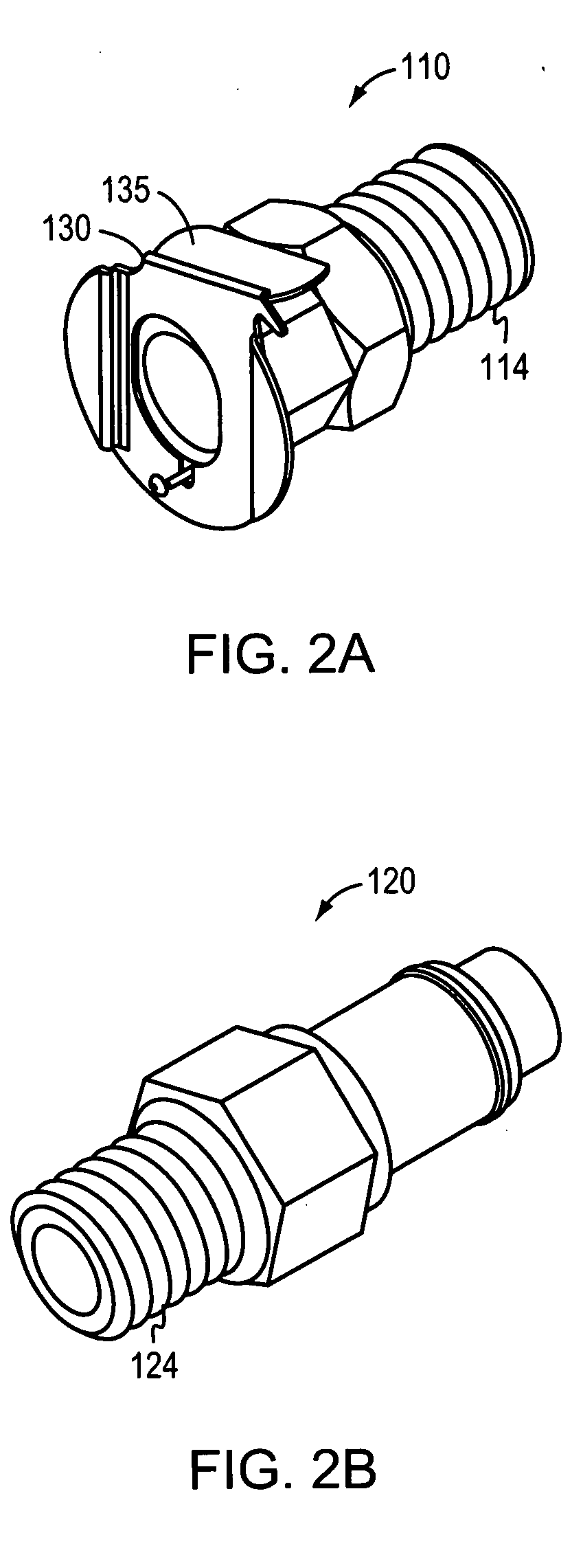One-touch connection and disconnection method and apparatus
a technology of one-touch connection and one-touch disconnection, which is applied in the direction of plasma technique, coupling device connection, electrical apparatus, etc., can solve the problems of increasing the time required to engage and disengage the lead connection, affecting the size of the power supply, and time-consuming use of tools, so as to save both the time required to engage and eliminate the need for tools. , the effect of convenient us
- Summary
- Abstract
- Description
- Claims
- Application Information
AI Technical Summary
Benefits of technology
Problems solved by technology
Method used
Image
Examples
Embodiment Construction
[0061]FIG. 1 illustrates a connector assembly 100 that connects a lead to a power supply for a plasma arc system. Referring also to FIGS. 2A-2B, the connector assembly 100 features a first connector 110 and a second connector 120. The first connector 110 is adapted to mate with the second connector 120 along a longitudinal axis 150. The first connector 110 is, for example, a female connector adapted to receive a mated male connector. A first locking member 130 engages the first connector 110 and the mated second connector 120. Similarly, the first locking member 130 disengages the first connector 110 and the second connector 120. In one embodiment, the first locking member 130 is integral to the first connector 110. Alternatively, a locking member can be integral to the second connector 120 (not shown). In another embodiment, a locking member is separate from both the first connector 110 and the second connector 120 (not shown).
[0062] The first connector 110 termination 114 is thre...
PUM
 Login to View More
Login to View More Abstract
Description
Claims
Application Information
 Login to View More
Login to View More - R&D
- Intellectual Property
- Life Sciences
- Materials
- Tech Scout
- Unparalleled Data Quality
- Higher Quality Content
- 60% Fewer Hallucinations
Browse by: Latest US Patents, China's latest patents, Technical Efficacy Thesaurus, Application Domain, Technology Topic, Popular Technical Reports.
© 2025 PatSnap. All rights reserved.Legal|Privacy policy|Modern Slavery Act Transparency Statement|Sitemap|About US| Contact US: help@patsnap.com



